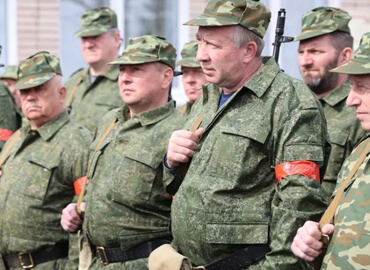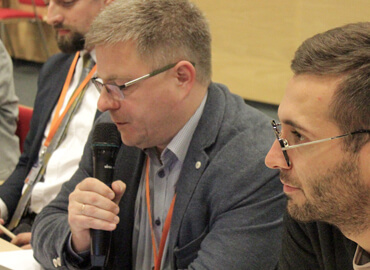The Ministry of Health tellingly ignored data that indicated a massive underestimation of official statistics for deaths from coronavirus in Belarus, while continuing to baselessly assert a similarity of the Belarusian approach to the fight against the epidemic in Sweden.
Estimates of excess mortality in April-June 2020
Even though we are already into December, Belstat has not yet published official mortality statistics for the second quarter of 2020. Probably, in this way, the department decided to keep the anxiety of Belarusians down. At the same time, as Nasha Niva was the first to report, Belarusian authorities shared mortality data with the UN which then published the data.
It turns out that from April to June, the death rate in Belarus exceeded average previous years’ annual indicators by about 5,500 people. For comparison, if about 10,600 people died in Belarus in May last year, then in May 2020 this number was almost 12,000. Last June, about 9,300 people died in Belarus, however there were more than 13,000 deaths this year the same month.
From data published by the UN, it follows that in four months (March to June) the number of deaths associated with COVID-19 probably exceeded 5,000. According to official statistics, as of June 30, 392 people died from the coronavirus in Belarus.
That is, the statistics were underestimated by 10-15 times.
However, as follows from the findings of a recent academic publication, the excess mortality rate in Belarus from April through June is probably even higher. The fact is that in recent years, the monthly mortality rate in Belarus has dropped slightly, and therefore a simple comparison in April-June with previous years is likely to underestimate (!) the true indicators of excess mortality.
The publication rightly notes that a comparison with mortality statistics for the same period of the year with previous years, although simple and intuitive, is not an entirely accurate way of determining excess mortality. Based on modeling of the “normal mortality” rate, based on an analysis of trends in monthly mortality (for all months of the year) since 1980, the article concludes that the real number of excess deaths from April to June 2020 is in the range of 4,200 to 9,300, and most likely is about 6,700.
This means that Belarus is among the countries most affected by the coronavirus infection.
The level of excess mortality per capita in Belarus (71 per 100,000 people as the most likely value) from April through June is comparable to rates in Italy, the U.S., and Belgium.
Alexander Lukashenko has repeatedly compared mortality rates for January-March, while the epidemic began to spread actively only in April. It is worth noting that it was from April that all comparisons with last year’s statistics stopped abruptly, and information about the number of hospitalizations with pneumonia began to suddenly disappear from websites of regional newspapers in May.
In March, experts from Imperial College London assessed the real threats at various levels of response to the epidemic. Scientists have calculated that with the reproductive number of the epidemic, the number of deaths from coronavirus infection in Belarus over 8 months of the epidemic (250 days), while taking relatively mild countermeasures, can range from 15,000 to 32,000 people.
From the same academic article, it was shown that the start of a more serious set of countermeasures from the moment a mortality rate of 0.2 per 100,000 people per week (that is, 18 people per week) was reached would reduce the number of deaths from coronavirus infection in Belarus to 1,860 people. The findings of this study and a critical analysis of measures taken by Belarusian authorities were presented in the study “Coronavirus Epidemic: Scenarios of Consequences for Belarus” in early April 2020.
A Swedish or Turkmen-Tajik approach?
Despite the appearance of sobering mortality statistics for April-June 2020, the Ministry of Health continues to talk about its “successful” fight against the coronavirus. Deputy Minister Elena Bogdan recently reiterated that Belarus has taken practically the same (correct) way as Sweden in the fight against the pandemic.
The correctness of the “Swedish” approach is far from clear. As of the end of September 2020, the number of deaths from COVID-19 per capita in Sweden was about 5 times higher than in Denmark and about 10 times higher than in Finland and Norway.
Despite ambiguous current statistics against the backdrop of its neighbors, Sweden really adhered to a certain integral strategy that was based on high-quality information provided to the population and on the introduction of relatively (!) minor restrictive measures.
The Belarusian approach to the fight against the coronavirus epidemic has nothing to do with the “Swedish” one. Belarus initially focused on the rapid isolation of sick people, as well as contact tracing and monitoring, without introducing any serious social distancing measures. The failure of this approach became obvious by early April, but the Belarusian authorities continued to stubbornly follow it. Subsequently, the “strategy” was reduced to a suffering of the epidemic with the hope of a seasonal decline and a large supply of hospital beds.
The main differences between the Belarusian strategy and the “Swedish” approach are as follows:
An essential element of the Swedish approach to the fight against coronavirus was excellent public awareness. The Swedish authorities did not keep dual statistics, and the media was not faced with the task of denying or minimizing the risks of coronavirus. The press did not ridicule COVID-19 measures, newspapers did not remove information about the number of pneumonia cases in local hospitals from their websites, and statistical agencies provided the most accurate data. Swedish epidemiologists did not hide from journalists, but patiently communicated with the media daily.
For comparison, the last full-fledged communication with the press on the coronavirus situation was held by Belarusian Ministry of Health officials in April at the height of the epidemic. Later, they only occasionally flickered on state television channels to talk about the world’s most effective fight against a pandemic.
This is not a Swedish, but a Turkmen approach.
There was a completely different approach to limiting public events. At a time when the Swedish authorities canceled the world’s largest half marathon and other sports competitions, the football and hockey championships continued in Belarus without any restrictions.
Sweden imposed restrictions on many public events with more than 50 people back in March. While King Carl XVI Gustaf and Swedish officials urged the population to refrain from travel and active social communication on Easter weekend, Alexander Lukashenko urged people to go to church services, and later ordered a massive city cleanup and military parade.
This is not a Swedish, but a Tajik approach.
Belarus also did not introduce or introduced with a serious delay several social distancing measures that Sweden took back in March. Among them:
- Mandatory self-isolation of people who show symptoms of coronavirus infection, along with recommendations to work from home (if possible), and limited use of public transport and unnecessary contacts. The expediency of these measures was consistently explained in Sweden, whereas this kind of information campaign was almost completely ignored by Belarusian authorities;
- Closure of educational institutions. In Sweden, universities and secondary schools have been closed since March 18. Elementary schools were not closed, but only to allow doctors to avoid the need to be with children at home. In Belarus, a structured transition to distance learning at universities did not happen, and school holidays were extended only after numerous complaints from parents.
According to statistics for April-June, during only this period the number of deaths in Belarus, most of which are likely to be associated with COVID-19, exceeded 5,000 people. In Sweden, the number of coronavirus-related deaths as of October 1 was 5,893. It follows then that due to the conditional Turkmen-Tajik approach adopted by Belarus, Belarusian mortality statistics are much worse than in Sweden.
Other arguments by the Ministry of Health
Acting Minister of Health Dmitry Pinevich commented on the off-the-chart mortality statistics in the second quarter, which is clearly associated with the coronavirus, in the spirit of “I don’t know anything, don’t ask us”:
“Look, the National Statistics Committee collects data not from us, but from the registry offices. The National Statistical Committee sees death that we do not see – forensic death at home. That is, the National Statistics Service collects data through non-departmental institutions.”
Pinevich is trying to point out that the Ministry of Health is supposedly inaccessible and not subject to complete and effective data on mortality and that these figures are exclusively held by Belstat.
At the same time, in trying to calm the public, the chief physician of the Stolbcy Regional Hospital, Svetlana Glebko, in an interview with the local regional newspaper on May 2, shared the final data on mortality in the region for January-April (!) and cited data for various causes of mortality in April.
Consequently, the Ministry of Health also could receive effective information on mortality throughout the country.
Pinevich did not say when the Ministry of Health will announce detailed data on the causes of mortality, age structure, etc., and whether the Ministry of Health will start an intradepartmental check on manipulation of statistics.
Playing ahead of the curve, Pinevich said at the same time: “Nobody evaluates an epidemic in three or four months. An epidemic is evaluated by year… WHO experts, for example, evaluate an epidemic generally after a year and a half. Then we will see.”
The Ministry of Health is right that estimates over a longer period of time will provide better reflection of COVID-19 deaths. However, this does not mean that any assessment should be given in a year and a half. If it were not for regular monitoring and there were no intermediate conclusions during epidemics about the effectiveness of measures taken, then the meaning of the existence of the WHO and national epidemiological institutions would be largely undermined.
When a WHO mission arrived in Minsk in April 2020 and made specific recommendations on appropriate bans and restrictions on public events during the pandemic, the Belarusian authorities openly disregarded them. Nevertheless, the Ministry of Health continues to manipulate references to the WHO for its own benefit.
As for the lack of estimates “for three or four months,” Alexander Lukashenko in March assessed the epidemiological situation generally over two months (January and February). He, in fact, analyzed the period when the epidemic had not yet begun. As is known, the first case of COVID-19 in Belarus was recorded only on February 27.
“The head of state cited comparative statistics for the past year and this year on the number of deaths because of pneumonia. According to Alexander Lukashenko, in 2019 in January and February there were 196 such cases and now there are 138,” state media reported in March.
The irresponsible actions of the state media in light of the epidemic deserve special attention. They completely ignored the sharp rise in excess mortality from April through June. Instead, Belarus Channel 1 reported in September that Belarus had certainly defeated the coronavirus because Prime Minister Roman Golovchenko decided to test the Russian anti-coronavirus vaccine on himself.
In a rule-of-law state, systematic actions by the national media to ridicule and minimize the risks of an epidemic could lead not only to critical review by media regulating bodies, but also spark a legal review of the performance of work or the provision of (information) services that led to the death of a person or the infliction of serious bodily harm.
Материал доступен на русском языке: Последствия коронавирусной эпидемии и стратегия отрицания властей Беларуси










